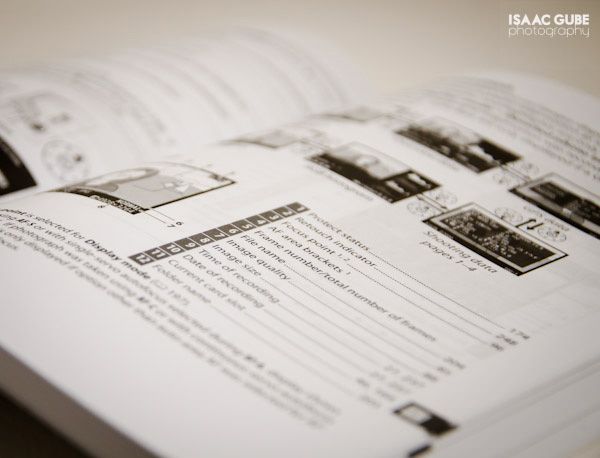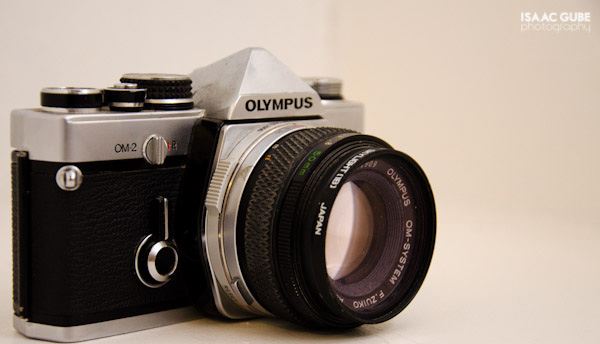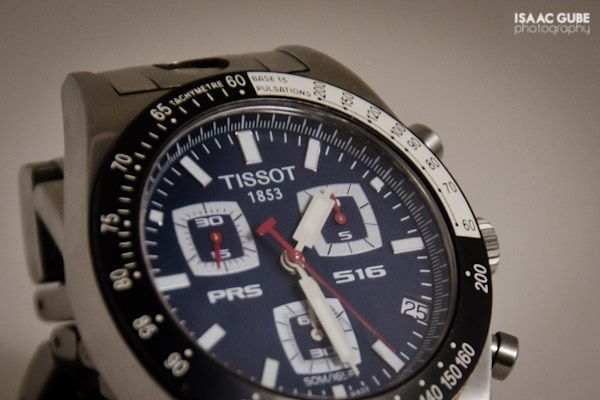- Home
- Blog
- Web Design 10 Photography Tips from a Self-Taught Photographer
10 Photography Tips from a Self-Taught Photographer
-
 12 min. read
12 min. read
-
 Trevin Shirey
Trevin Shirey VP of Marketing
VP of Marketing
- Trevin serves as the VP of Marketing at WebFX. He has worked on over 450 marketing campaigns and has been building websites for over 25 years. His work has been featured by Search Engine Land, USA Today, Fast Company and Inc.
I’ve been taking pictures ever since. However, I’ve switched to a digital camera now. Today, I’ve had my work published in fashion magazines, I’ve done a few photo shoots, and I cover some of my city’s best nightlife events.
Now, I won’t pretend I’m an expert — or that I know everything there is to know about photography — because I am not, and who does? However, being self-taught helped me learn some valuable lessons the hard, painful, torturous way and therefore, guaranteed that I never forget them. I’d like to share some of those lessons with you.
For those of you who are just starting out, or would like to take their photography to the next level, hopefully, this set of tips will help you in one way or another. Though most of you are designers and digital artists, a popular additional profession for creatives is photography because it’s handy in many situations. For example, instead of relying on stock photos, you can take your own photos and infuse them into your work.
(Some of our authors do, such as Sekani Solomon).
1. Read Your Camera’s Manual
I’m not the first to say this, and I won’t be the last. It’s because reading your camera’s manual is that important. The first camera I bought was a used camera and it didn’t come with a user’s manual.
After I saw the first few rolls of film I had developed, it made me wish that it did.  By the time I got my second camera, I was really getting serious with photography. And although I was at a point where I thought I was familiar with the workings of most cameras, I still sat down and read the 300+ page user’s manual that came with it.
By the time I got my second camera, I was really getting serious with photography. And although I was at a point where I thought I was familiar with the workings of most cameras, I still sat down and read the 300+ page user’s manual that came with it.
Cover to cover. And when I was done, I read it again. You might be thinking you’re too good for the user’s manual.
But let me tell you, reading your manual is important for a couple of reasons:
- You need to become familiar with every aspect of your camera.
- The more familiar you are with your camera, the sooner it will get out of your way.
The last thing you want to do when taking photos is to have to fiddle around with your camera when you should be composing your shot or studying your subject. Not only will you look foolish, but you will most likely kill your photo before you even get a chance to take it.
2. Find Something to Shoot
There’s no point in having a camera if you have nothing to shoot. You will waste a lot of time and energy trying to make sense of the hundreds of dollars you spent on your fancy new camera if you don’t have a subject. The beauty of photography is that it has a certain urgency associated with it.
No photo gets taken without the need for it. The moment comes, you have your camera, and you make a decision to press on the shutter release. That’s the nature of photography.
The photo is contingent upon a need for it. Even if you create the need (e.g., fashion shoots, culinary photography, actively going out into the world to take photos), what you’re actually doing is actively creating the conditions in which photos must be taken. You create those conditions.
It is an active choice for the photographer. The act of finding your subject is important. Your subject says more about you than you think.
Your subject tells people that you were there and that’s what you saw and that’s what you chose to take a picture of. As a photographer, you not only record moments in a story, you record moments in your story. Your photos place you in space and time and, to some extent, you become your subject.
3. The Camera is Just a Camera
Sure it’s made of super cool materials like magnesium and glass and plastic. It has so many buttons and dials and doodads and thingamabobs. It may seem like your camera is some kind of super gadget ready to be sent into space, able to do magnificent, unfathomable things; but really, it’s just a lightproof box with a hole on the front.
No matter how technologically advanced a camera is, it still needs a photographer setting its dials, pressing its buttons, and pointing it at something interesting. Actually, come to think of it, NASA did send out a couple of cameras into space called Voyager 1 and Voyager 2. Those actually were technologically advanced enough to be sent into space, and yet they still needed instructions from people here on Earth. What I’m really hinting at is that the camera doesn’t make the photographer. It doesn’t matter if you use a plastic toy camera you found in the discount bin at your local store or if you use a super expensive professional grade, nuclear-powered DSLR that also works as a beacon for your mothership.
The bottom line is, when a person looks at a picture, and that picture is judged to be good or bad, they’re not judging the equipment you used. They’ll be judging the photographer who took it.  The principles of photography haven’t changed that drastically since it first emerged in the 1860’s.
The principles of photography haven’t changed that drastically since it first emerged in the 1860’s.
It’s still about controlling how much light is allowed to pass through a lens and onto a recording medium. And yet, there’s still that misconception that the technology is what’s responsible for good photography. The technology was just the spark. The flame is kept alive by the photographer.
4. Learn About Exposure
Exposure, simply speaking, is the combination of three main variables that control the amount of light that is allowed to interact with your camera’s sensor or film. These are:
- Shutter speed
- Aperture
- Film speed (or ISO)
The right combination of these variables is at the heart and soul of every photograph that has ever been taken. However, exposure is an infinitely nuanced topic that belies its seeming simplicity. Entire libraries have been written about the subject of exposure and even more books are being written on the subject as you read this.
That’s because most photographers who have even a modicum of experience under their belt will have their own opinions about the subject and all of them are right (or wrong, depending on whom you ask). Even I, with barely a couple of years of professional experience, have my own opinions about exposure (hint: it’s magic!). Therefore, my suggestion is to find a way of understanding the fundamentals of proper exposure and learn it on your own terms until you are able to apply it to how you personally take photos.
Read a book, take a class, or learn it with a friend. In any case, you must learn how to expose properly so that you know which rules to break and how to break them for your own purposes. The technical aspects of photography — the parts detached from the “artistry” and the aesthetics of photography — is a broad pool of knowledge filled with numbers and meters and measurements and science and rules.
And while there is a purpose to all that knowledge, it doesn’t necessarily mean that it will all apply to your own work as a photographer.
5. Learn Composition
Learning to compose a shot isn’t merely about framing your subject within the four corners of your viewfinder (although it is that also). Composition (at least to me) has a lot to do with emotion, motion, feel, color, and a million other variables. You can take all the photography classes in the world.
You can do everything right. You can follow all the rules about taking a good photo. However, if something is not right in your photo, then something is just not right.
If the photo looks good, then it’s good. The photo doesn’t lie. Therefore, my suggestion is to learn the fundamentals of composition (e.g.
the rule of thirds, etc.) and find a way to adapt it to your own work. Know it, understand it, and then use/abuse what you need to make your work great.
6. Take Your Time
With the way cameras work these days, it’s easy to get caught up in the notion that photography is about catching a fleeting moment. Even camera manufacturers sometimes highlight this notion in some of their ad campaigns.  This is misleading for a couple of reasons.
This is misleading for a couple of reasons.
First, a moment is only fleeting when you’re not ready for it. Secondly, as a photographer with a purpose, your job is to always be ready. There’s an old saying that photojournalists use that says, “f/8 and be there.” This means that you set your aperture at f/8 — which is considered by many to be a magical f-stop in which most of your frame will be in sharp focus — and that you are there in the scene.
Now, being there isn’t just a geographic distinction. I’ve also taken it to mean that it is about being mentally, emotionally, and psychologically there. It means taking your time setting up the shot or taking your time preparing yourself.
When you’re there and you are ready for that so-called “fleeting moment,” then time is no longer a factor. The act of taking a photo no longer is a product of luck, but rather, an act of will. Even those “lucky” shots that some photographers will tell you about aren’t really lucky shots if you think about it.
They were there, they had the presence of mind to know what they wanted out of their photo, and they made an active decision to take a shot. This is one of the most painful lessons I learned. I used to rush when taking photos, thinking that I wasn’t going to have enough light during an outdoor shoot or I felt pressured because so many people were waiting on me.
I was chasing after that “fleeting moment.” The resulting pictures were always underwhelming. I’ve rushed through enough photo shoots to know that even if you feel you have very little time to get the shot you need (e.g., when the sun is about to go down, etc.), you actually have more time than you need if you slow yourself down and think about what you’re doing and what you want. It only takes a split second to actually press that button, which is why you can spare a few minutes to set up and get ready for the shot you want to take.
7. Turn Around
This is something I learned when I first started taking photos. I was so focused on what was in front of me that I missed out on everything else that surrounded me. One disadvantage of photography (or endearing characteristic, depending on how you look at it) is that it forces the photographer to see our boundless, 3-dimensional world, through a rather limited, 2-dimensional box.
This is enough of a challenge that sometimes that’s all we’re focused on doing and we miss out on everything else. So when you’re staring through your viewfinder just itching to take that perfect shot, take a moment and look around you. You never know what you might find.
8. Smile
When you think about it, a camera is a very threatening object to a lot of people. That’s because cameras represent the possibility of an invasion of privacy. The camera captures people’s actions, candid moments, and things people might not always want recorded.
In other words, in front of and around a camera, people often feel vulnerable and exposed. The camera doesn’t discriminate. It does not censor itself.
It captures everything you put in front of its lens. That’s why it’s up to the photographer to make their subjects and those around him feel at ease in the presence of his camera. One way of doing this is to smile sincerely at your subjects and those around you.
I take a lot of photos of people I don’t know. Now, I’m a nice guy. I’m funny and I’m always up for an interesting conversation.
But most people I meet and take pictures of don’t know that about me at first glance. Add a camera into that equation and it makes for a lot of awkward moments. That’s why, in these situations, a smile goes a long way.
It shows you’re friendly and that you won’t abuse the privilege of taking people’s pictures. Even on photo shoots with paid models whose job is to be in front of a camera, a smile, and keeping them at ease, helps with having a more relaxed and pleasant photo shoot.
9. Join a Club or Shoot with Someone
I’ve never had the opportunity to shoot with someone else. It’s not something I’ve sought to do personally. However, I can definitely see the appeal of shooting with like-minded individuals.
We all have different experiences when it comes to photography, sharing those experiences with someone else can be very enriching and mutually rewarding. Just like in a class environment, we often learn more through discussion and other people’s experiences than if we had studied alone.
10. Keep Shooting
The last thing I’ll say is to just keep shooting. Nothing beats experience. You can take all the photography courses you want, read every book about photography, talk about it, and read terribly long-winded articles like this one, but nothing will help you take better photos than just going out there and doing it and learning your own personal lessons.
The more you shoot, the better you’ll be at taking photos and the more insight you will gain into how you can improve. Sure, there are fundamentals in photography. There are rules and guidelines to being an effective photographer.
But going out there and just shooting is the only way to master them. And once you’ve mastered and understood those fundamentals, you’ll be better equipped to bend or break them when you find yourself needing to create something truly unique and good. What are your experiences with photography?
Do you have your own tips or insights you’d like to share?
-
 Trevin serves as the VP of Marketing at WebFX. He has worked on over 450 marketing campaigns and has been building websites for over 25 years. His work has been featured by Search Engine Land, USA Today, Fast Company and Inc.
Trevin serves as the VP of Marketing at WebFX. He has worked on over 450 marketing campaigns and has been building websites for over 25 years. His work has been featured by Search Engine Land, USA Today, Fast Company and Inc. -

WebFX is a full-service marketing agency with 1,100+ client reviews and a 4.9-star rating on Clutch! Find out how our expert team and revenue-accelerating tech can drive results for you! Learn more
Make estimating web design costs easy
Website design costs can be tricky to nail down. Get an instant estimate for a custom web design with our free website design cost calculator!
Try Our Free Web Design Cost Calculator


Web Design Calculator
Use our free tool to get a free, instant quote in under 60 seconds.
View Web Design CalculatorMake estimating web design costs easy
Website design costs can be tricky to nail down. Get an instant estimate for a custom web design with our free website design cost calculator!
Try Our Free Web Design Cost Calculator





